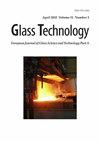INSURANCE OPPORTUNITIES AND CHALLENGES IN AN ARTIFICIAL INTELLIGENCE SOCIETY
IF 0.3
4区 材料科学
Q4 MATERIALS SCIENCE, CERAMICS
Glass Technology-European Journal of Glass Science and Technology Part a
Pub Date : 2022-09-03
DOI:10.47672/ejt.1180
引用次数: 0
Abstract
Purpose: The study examined the insurance opportunities and challenges in an Artificial Intelligence society. Methodology: This study relied on a critical review of previous academic studies on Artificial Intelligence and the insurance industry between 2017 and 2022. This method was chosen since it is more reliable, economical, and efficient in terms of time and resources. In addition, the researcher opted to use recent studies since they provide more updated information on the AI technologies that have significant impact on the insurance industry. Findings: The results of the study revealed that the reviewed studies consisted of contextual and conceptual gaps. This is because some of the studies did not target insurance companies but other companies hence the findings may not be applicable to the insurance industry. In addition, most of these studies discussed the insurance opportunities and benefits at in depth, but failed to discuss on the challenges that insurance firms face in an artificial intelligence society. Unique Contribution to Theory, Practice and Policy: The findings of this study will be relevant to the main players in the insurance industry. The management team of the insurance companies will have a better understanding of how the various AI technologies are adopted to the different insurance operations so as to improve business efficiency. The study has also been able to outline the main challenge that the insurance sector experience in the adoption of AI, this will encourage the management to consider investing in training programmes so as to improve the skills of their employees. On the other hand, the policymakers will also benefit from this study when developing better legal frameworks that promote the adoption of AI. Further, the study will also be useful academically to researchers and scholars by expanding the body of information on insurance and artificial intelligence, which is still scarce. The reviewed studies' highlighted research gaps that can also inspire researchers and scholars to conduct additional research on artificial intelligence and insurance. In particular, the study's key research gap on the insurance challenge experienced in an artificial intelligence society.人工智能社会中的保险业机遇与挑战
目的:本研究考察了人工智能社会中保险业的机遇和挑战。研究方法:本研究基于对2017年至2022年间关于人工智能和保险业的学术研究的批判性回顾。选择这种方法是因为它在时间和资源方面更可靠,更经济,更有效。此外,研究人员选择使用最近的研究,因为它们提供了对保险业产生重大影响的人工智能技术的更多最新信息。研究结果:研究结果表明,审查的研究包括上下文和概念上的差距。这是因为一些研究没有针对保险公司,而是针对其他公司,因此研究结果可能不适用于保险业。此外,这些研究大多深入讨论了保险的机会和利益,但未能讨论保险公司在人工智能社会中面临的挑战。对理论、实践和政策的独特贡献:本研究的结果将与保险业的主要参与者相关。保险公司的管理团队将更好地了解如何将各种人工智能技术应用于不同的保险业务,从而提高业务效率。该研究亦概述了保险业在采用人工智能时所遇到的主要挑战,这将鼓励管理层考虑投资培训计划,以提高员工的技能。另一方面,政策制定者在制定更好的促进人工智能采用的法律框架时也将从这项研究中受益。此外,该研究还将通过扩大保险和人工智能方面的信息体系,在学术上对研究人员和学者有用,这些信息仍然稀缺。这些研究强调了研究差距,也可以激励研究人员和学者在人工智能和保险方面进行更多的研究。特别是,该研究在人工智能社会中所经历的保险挑战方面的关键研究差距。
本文章由计算机程序翻译,如有差异,请以英文原文为准。
求助全文
约1分钟内获得全文
求助全文
来源期刊
CiteScore
0.30
自引率
0.00%
发文量
0
审稿时长
>12 weeks
期刊介绍:
The Journal of the Society of Glass Technology was published between 1917 and 1959. There were four or six issues per year depending on economic circumstances of the Society and the country. Each issue contains Proceedings, Transactions, Abstracts, News and Reviews, and Advertisements, all thesesections were numbered separately. The bound volumes collected these pages into separate sections, dropping the adverts. There is a list of Council members and Officers of the Society and earlier volumes also had lists of personal and company members.
JSGT was divided into Part A Glass Technology and Part B Physics and Chemistry of Glasses in 1960.

 求助内容:
求助内容: 应助结果提醒方式:
应助结果提醒方式:


